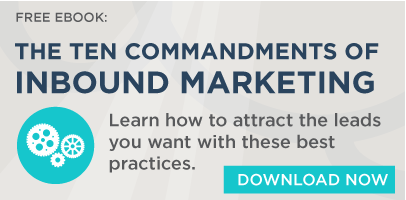
“They” say a picture is worth 1,000 words. As a content manager with a marketing background, I started thinking about this. Who is “they,” and how do “they” know? Even more… if a picture REALLY is worth 1,000 words, then that picture is worth the investment, so why don’t more brands invest in great pictures?
By nature, humans are very visual. When processing visuals, we use 30% of our brains, and yet we only use 8% for touch and 3% for hearing. Research has found that after hearing information, people only remember 10% of it three days later, but they remember 65% of the information if a relevant image accompanies the information.
As a marketer, I can look at that information and confirm that visuals are important in marketing and communications. You don’t really have to pull my leg much to get me to believe that. Really, all you have to look at is performance of ads or content with good images that speak to the target audience and know that visuals are important.
But what I get stuck on so often is how many companies don’t want to utilize this sense to its fullest capacity to enhance their marketing and communications efforts because of the financial investment they might incur. Now, I know there are many free options out there, but I just want to touch on this investment and how important it really is to your marketing efforts.
The fact that a picture can convey what it would take 1,000 words to do tells me that
- A picture can help grab the attention of our short-attention-spanned society quicker than a bunch of words.
- A picture can add value to the work I’ve put a lot of time and effort into.
What does a good picture achieve?
Good pictures and imagery achieve many things. I’ve listed a few, but don’t think pictures are limited to this… they can do more.
- Strengthen brand
- Tell a story
- Connect with your target audience
- Evoke emotion
- Capture attention
- Grow trust
- Support a message
- Encourage action
How to choose an image?
The fun part… you’ve written your blog or your social media post. Now what? What about choosing an image for your ad placement or email campaign? Choosing an image is vital to the success of the actions listed above.
As a content manager, I do this daily. Not only do I do it daily, I do it multiple times a day, for many clients, across various industries and sizes. Over the past years, I’ve gathered a few tips for choosing the best picture for your marketing content.
- WHO are you speaking to? Know your target audience. If you’re a financial investment company in Florida, don’t use a picture of a young adult skiing. More than likely, your target audience is middle to senior aged, and obviously not hitting the ski slopes on a regular basis since snow is almost non-existent in Florida. Knowing your target audience FIRST is key to not only choosing great imagery, but also key to any and all marketing efforts you spend time or resources on!
- WHAT do your brand standards define for imagery? Okay, if you don’t have brand standards or guidelines, that’s an entirely different topic for another day. BUT if you do, please utilize them! Your brand standards should outline and define images, colors, image types, etc., that not only fit your standards, but support your brand. For example, a brand that has vibrant colors, loud text and bold shapes will have imagery that’s totally different from a brand that’s classic and refined. Images can support your branding, and it’s vital that brands are consistent to capture the attention of the audience, continue to grow their trust of the brand, evoke emotion with the audience, and encourage action from their marketing efforts.
- WHERE is your message being presented? Know what channels the picture will be utilized on. Sizing and display can affect what picture you choose. Ensure the picture that’s chosen can keep the subject as the focus when it’s cropped or resized. There’s nothing worse than deciding on a great image, only to realize that when it’s cropped for your blog post, the subject’s face gets cut out, distorting the focus of the picture.
- HOW is your message being conveyed? What is your content saying? Similar to choosing an image that speaks to your audience, you need to choose pictures that match what your content message is saying. If a technical college is promoting classes on degrees for professions where their students can work from home, a picture of a nurse at a medical office is not what the content is portraying. While the demographics might match that of their target audience, it doesn’t match the content. I hate nothing more than skimming Pinterest and clicking on an image of a dish I want to try to make, and the link takes me to a random website that has nothing to do with recipes or that dish that was in the picture. This example is a bit extreme, but I often see images for blog posts that don’t match the content just to try and get people to click to the blog.
What’s it worth?
So the fun part… MONEY. What are these great visual tools worth that can enhance your marketing efforts? Many people don’t think they should have to pay for pictures, and there are MANY resources where you can get free stock photos. But I warn you: you get what you pay for. I say this somewhat lightly, but it’s true. These are the types of pictures I think are worth the investment:
- Branded Stock Photos — these consist of an actual photo shoot for a campaign or for your business where you have photos unique to your company or message that can be found nowhere else. You can manage the look, outcome, style, subjects and more, and even work with the photographer throughout the shoot with your shot list to ensure you have the exact images that portray the exact message with the subject exactly where you want them to be and looking exactly like you want them. With these types of pictures, you’ll pay a hefty penny, but you’ll have exactly what you want and need.
- Stock Photos Subscription — this is where it’s at. And I know first hand, because my company values great imagery and invests in a stock photo subscription service. Sometimes, I feel like I have the world at my fingertips as a I search, refine my search, and search some more, to find the perfect picture for a client. There have been times that the subscription has let me down, but more times than not, I’m wonderfully pleased at the outcome I achieve through our stock photo service. Again, this is a financial investment, but how much is it worth to you to have great images without having to spend thousands and thousands on a photoshoot, models, the photographer, photo editing, photo rights, etc.?
- Free Stock Photos — I’m not going to lie, there are some great free stock photo websites. I’ve found very professional stock photos that I can use and download for free, but I will say that they are just very limited in number, so finding exactly what you want to achieve your goal might not be as easy. You won’t find as many options, and sometimes the quality is not as professional, but I definitely won’t count this option out. The main thing is to ensure that no matter what images you are using, you have the rights to be using them.
So I ask, what is 1,000 words worth to you? Is it worth the investment of great imagery to capture the attention of your target audience and evoke an emotion within them that makes them act on your call-to-action? Or are you a gambling man or woman, and hope that your content will just perform well because you’ve put time into it? I think I’ll leave it to the stats and research that show how powerful pictures are in messaging and communication.
If it says anything, my word count is currently clocking in around 1,400+ words. You better believe I’m going to search for a great image that speaks to the content that I’ve spent all this time writing. I’m not going to waste those 1,400+ words by using a bad picture and have someone pass by this awesome post. I hope you, too, will value your work so much that you want to invest in great imagery to have the greatest success with your marketing content and efforts.
.png)







Leave a Comment